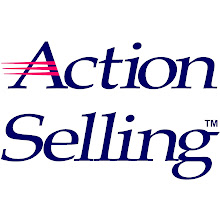Sales Managers: Coach how to question the question
What Works Best For Your Company?
Action Selling: It’s Not Just for Salespeople Anymore!
The nine acts of the Action Selling sales training program, provide salespeople with a complete strategic and tactical guide for planning and conducting client calls. But the same system offers a clear roadmap and a set of powerful tools for any employee who comes into regular contact with customers. As a quick example, consider the Action Selling principle of “answering a question with a question.” Even veteran salespeople make the common mistake of replying too soon to customer questions that turn out to be “loaded,” instead of taking the time to probe for the real issue behind the question.
Quick and thoughtless answers kill a multitude of sales. If experienced salespeople fall into this trap, imagine how many potential sales are blown by untrained and inexperienced customer-contact people.
Here is a tragic little scene that plays out every day, with minor variations, in thousands of businesses. A customer thumbs though a catalog and points to an item. “Do you have any of these in stock?” he asks the service representative. Customer Service Rep: “No, I’m afraid not. We sold out yesterday.”Customer (annoyed): “All right, I’ll get them somewhere else. You don’t seem to stock as many items as you used to.”
Why would Action Selling call that tragic? Because your service rep might have turned the situation around so easily—rescuing a nice sale and pleasing a valuable customer—if only she knew the value of answering a question with a question. Then the scene might have played like this instead:Customer: “Do you have any of these in stock?”Rep: “How soon will you need them?”Customer: “Well, we’re running a little low. Probably in a week.”Rep: “So if I can get them for you in a week, that would be all right?” Customer: “Yes, that will be fine.”
Ca-ching! Hear that cash register ring? See that customer who is now impressed by your service and by your rep’s helpfulness instead of disgruntled by your lack of inventory?
Now let’s ask our original question again. If you could do one thing to boost your company’s sales astronomically, what would it be? Answer: Arm your customer-contact employees with Action Selling skills.
Contact us to learn more about leveraging the power of Action Selling to transform your company’s entire sales culture


